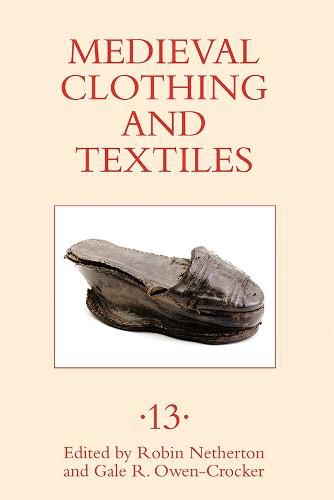Readings Newsletter
Become a Readings Member to make your shopping experience even easier.
Sign in or sign up for free!
You’re not far away from qualifying for FREE standard shipping within Australia
You’ve qualified for FREE standard shipping within Australia
The cart is loading…






Three of the essays in this collection focus on Italy, with contributions on footwear in Lucca based on documentary evidence of the fourteenth century; aristocratic furnishings as described in a royal letter of the fifteenth century, along with its first translation into English; and Boccaccio’s treatment of disguise involving Christian/Islamic identity shifts in his Decameron. The Bayeux Tapestry is discussed as a narrative artwork that adopts various costumes for semiotic purposes. Another chapter considers surviving artefacts: a detailed study of a piece of quilted fabric armour, one of two such items surviving in Lubeck, Germany, reveals how it was made and suggests reasons for some of the unusual features. The volume also includes an investigation of the commercial vocabulary related to the medieval textile and fur industries: the terms used in Britain for measuring textile and fur are listed and discussed, especially the unique use of Anglo-French launces in a document of 1300.
Contributors: Jane Bridgeman, Mark C. Chambers, Jessica Finley, Ana Grinberg, Christine Meek, Gale R. Owen-Crocker
$9.00 standard shipping within Australia
FREE standard shipping within Australia for orders over $100.00
Express & International shipping calculated at checkout
Three of the essays in this collection focus on Italy, with contributions on footwear in Lucca based on documentary evidence of the fourteenth century; aristocratic furnishings as described in a royal letter of the fifteenth century, along with its first translation into English; and Boccaccio’s treatment of disguise involving Christian/Islamic identity shifts in his Decameron. The Bayeux Tapestry is discussed as a narrative artwork that adopts various costumes for semiotic purposes. Another chapter considers surviving artefacts: a detailed study of a piece of quilted fabric armour, one of two such items surviving in Lubeck, Germany, reveals how it was made and suggests reasons for some of the unusual features. The volume also includes an investigation of the commercial vocabulary related to the medieval textile and fur industries: the terms used in Britain for measuring textile and fur are listed and discussed, especially the unique use of Anglo-French launces in a document of 1300.
Contributors: Jane Bridgeman, Mark C. Chambers, Jessica Finley, Ana Grinberg, Christine Meek, Gale R. Owen-Crocker